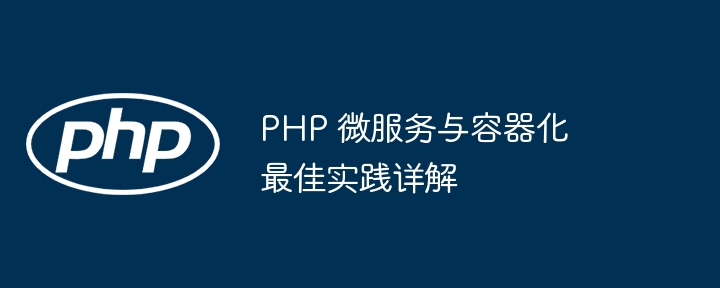
PHP best practices for microservices include decomposing applications, defining clear APIs, using message buses, and implementing the circuit breaker pattern. Containerization best practices include using orchestration tools, creating custom images, automating builds and deployments, persisting data volumes, and implementing load balancing and automatic scaling. A hands-on example of a microservices eCommerce website demonstrates these practices in action, where microservices are packaged as Docker images and orchestrated and managed using Kubernetes.

Detailed Explanation of PHP Microservices and Containerization Best Practices
Microservice architecture is known for its flexibility, scalability and agility popular among developers. Containerization is an ideal deployment method for microservices because it provides isolation, portability, and resource management.
PHP Microservices Best Practices
PHP Containerization Best Practices
Practical Case: Microservices eCommerce Website
Consider a microservices eCommerce website with the following components:
Containerized deployment:
Each microservice is packaged as its own Docker image and orchestrated and managed using Kubernetes.
The above is the detailed content of Detailed explanation of best practices for PHP microservices and containerization. For more information, please follow other related articles on the PHP Chinese website!
 The difference between k8s and docker
The difference between k8s and docker
 How to open php file
How to open php file
 The difference between distributed and microservices
The difference between distributed and microservices
 How to remove the first few elements of an array in php
How to remove the first few elements of an array in php
 What to do if php deserialization fails
What to do if php deserialization fails
 How to connect php to mssql database
How to connect php to mssql database
 How to connect php to mssql database
How to connect php to mssql database
 How to upload html
How to upload html